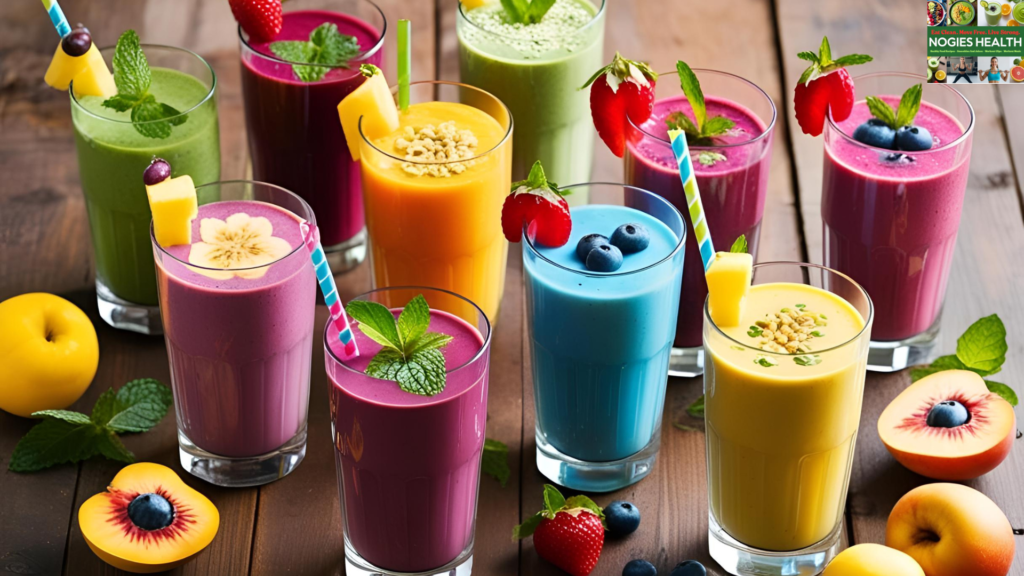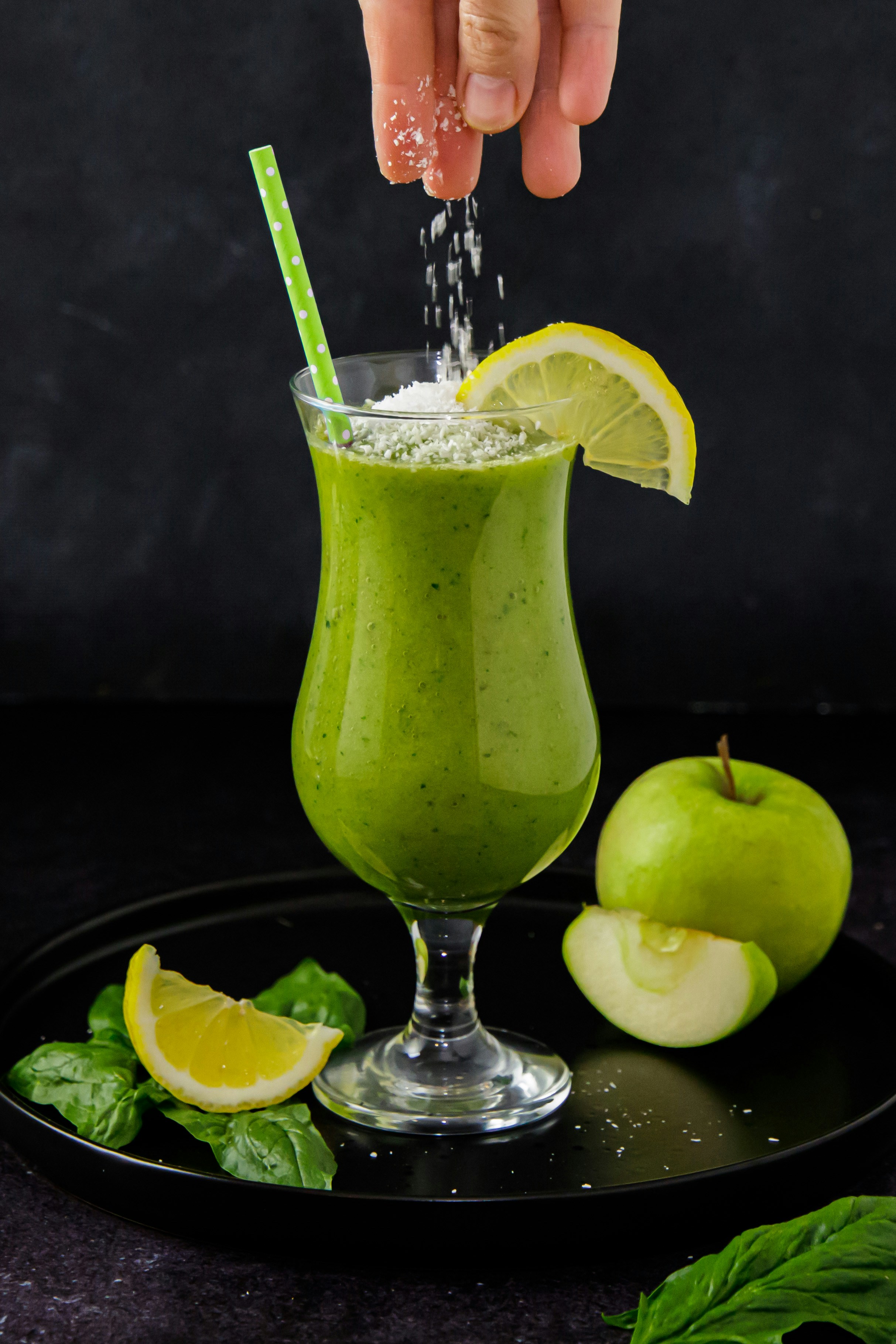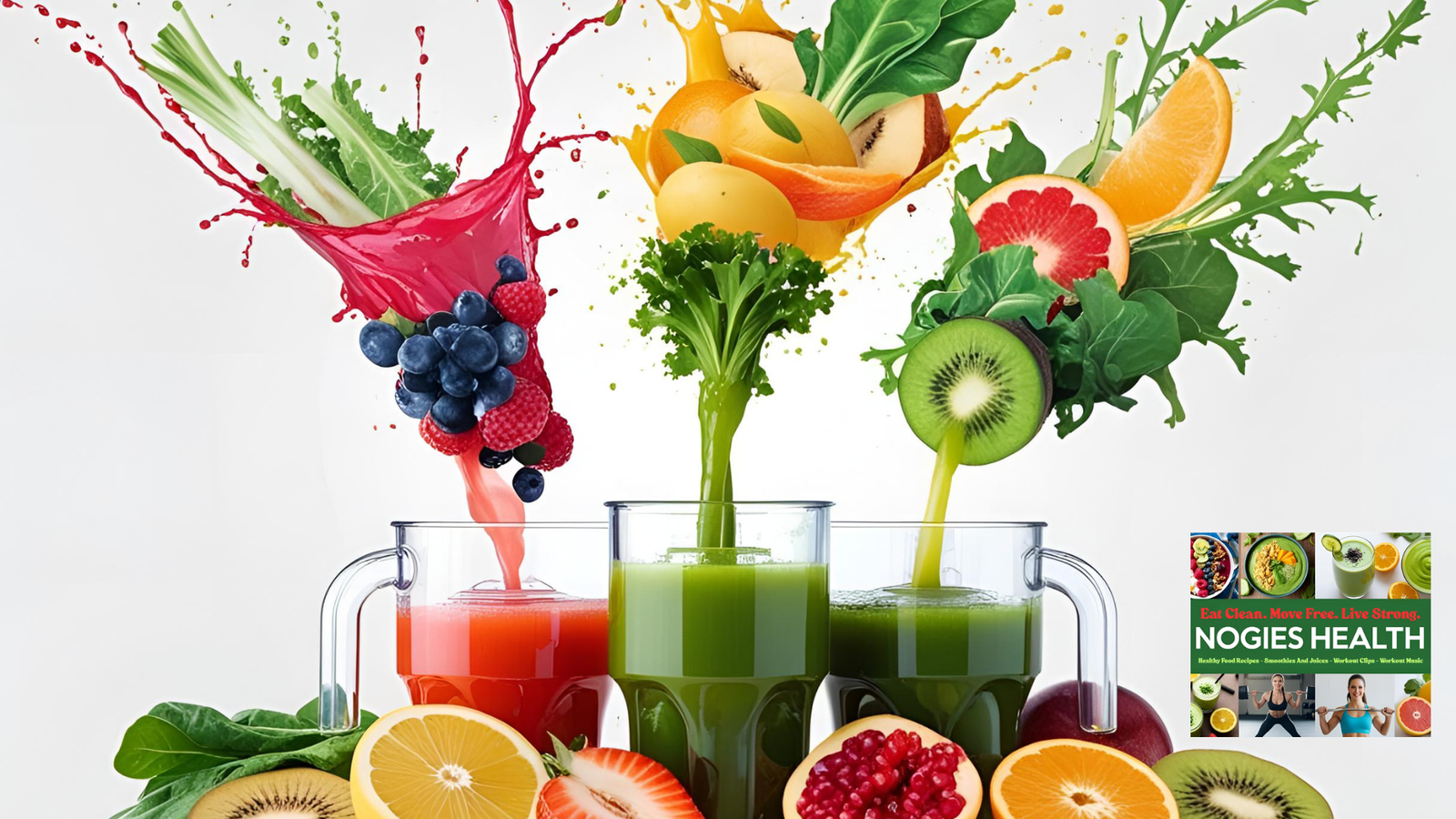
What Are Smoothies?
A smoothie is a blended beverage that typically consists of various ingredients including fruits, vegetables, liquids, and other nutritious components. These drinks have gained popularity due to their convenience and ability to pack essential nutrients in a single serving. The basic composition of a smoothie often includes a base liquid such as water, milk, or juice, which is combined with fruits like bananas, berries, or mangoes. Vegetables such as spinach or kale can also be added, making smoothies an excellent option for those seeking to increase their daily intake of vitamins and minerals.
One of the significant advantages of smoothies is their versatility. They can be tailored to suit individual taste preferences and nutritional needs. For instance, a fruit smoothie primarily focuses on ripe and sweet fruits blended to achieve a creamy texture. Conversely, green smoothies are enriched with leafy vegetables, often offering a more refreshing, less sweet taste while still delivering vital nutrients. Additionally, protein smoothies are designed to support muscle recovery and satiety, featuring ingredients like protein powder, Greek yogurt, or nut butter.
The process of blending ingredients creates a smooth and palatable drink, allowing for the consumption of whole fruits and vegetables in a more enjoyable manner. This aspect makes smoothies particularly appealing for individuals who may struggle to incorporate sufficient produce into their diets. As a holistic dietary addition, smoothies can serve as a nutritious breakfast option, an energizing snack, or a satisfying meal replacement. Ultimately, they present an accessible way for individuals to enhance their health and well-being by seamlessly incorporating wholesome ingredients into their everyday routines.
Health Benefits of Drinking Smoothies
Incorporating smoothies into your daily diet can yield a multitude of health benefits that contribute significantly to overall wellness. One of the primary advantages of drinking smoothies is their potential to enhance digestion. Many smoothies are rich in dietary fiber, particularly those containing fruits, vegetables, and whole grains. This fiber aids in maintaining a healthy digestive system, preventing constipation, and promoting gut health.
Another noteworthy benefit associated with smoothies is the sustained energy they provide. By combining nutrient-dense ingredients, smoothies deliver a balanced mix of carbohydrates, proteins, and healthy fats that can help stabilize blood sugar levels, thus preventing the energy spikes and crashes commonly associated with processed snacks. Adding ingredients like spinach, berries, and nuts can further enrich smoothies with vitamins and minerals essential for optimal bodily functions.
Weight management is also a significant aspect to consider when evaluating the health benefits of smoothies. They serve as an excellent alternative to high-calorie meals and snacks. When formulated correctly, smoothies can keep you satiated for longer periods due to their fiber content and nutrient density, aiding in calorie control. Including ingredients like protein powders or Greek yogurt can enhance the satiety factor, making it easier to adhere to a healthy eating plan.
Moreover, smoothies assist in enhancing nutrient absorption. Blending your ingredients breaks down the cell walls of fruits and vegetables, making nutrients more accessible for your body to utilize. This ensures that you glean maximum benefits from the vitamins and minerals incorporated in your smoothie recipes. Ultimately, by utilizing a diverse range of ingredients, such as leafy greens, fruits, seeds, and nut butters, smoothies can contribute significantly to a balanced diet, making them a vital ally in your journey toward better health.
Must-Have Smoothie Ingredients
Creating delicious and nutritious smoothies is an exciting endeavor that begins with selecting the right ingredients. For beginners, understanding which components to include in a smoothie can empower them to customize their creations to meet personal tastes and nutritional needs. This guide will categorize the essential smoothie ingredients into four key groups: fruits, leafy greens, seeds, and liquids.
Fruits serve as the foundation for many smoothies, offering natural sweetness, flavor, and a wealth of vitamins and minerals. Common fruits used in smoothies include bananas, which contribute creaminess and potassium; berries such as strawberries, blueberries, and raspberries, known for their antioxidant properties; and mangoes for their tropical flair. The versatility of fruits allows for a broad range of flavor combinations, encouraging experimentation.
Leafy greens are another critical component of smoothies. They provide essential nutrients without overpowering the taste. Spinach and kale are popular choices; they are mild in flavor and blend seamlessly with sweeter fruits. For those looking to increase their nutrient intake while maintaining a pleasant taste, incorporating greens is an effective approach.
Seeds add texture and a healthy boost of omega-3 fatty acids, protein, and fiber. Flaxseeds or chia seeds are excellent options to include in smoothies, as they not only enhance the nutritional profile but also help achieve that desired consistency. The incorporation of seeds encourages an increase in satiety and overall healthfulness of the beverage.
Lastly, liquids are essential for creating the right consistency. Water, milk (dairy or plant-based), or juice can serve as a base. The choice of liquid impacts the flavor and texture of the smoothie, allowing for further customization. By mixing and matching these ingredients based on preference and dietary requirements, beginners can easily craft smoothies that are not only delicious but also beneficial for their health.
Equipment Needed for Smoothie Making
To embark on your smoothie-making journey, selecting the right equipment is paramount to achieving the desired texture and flavor. At the forefront of this equipment is the blender, which is essential for seamlessly blending fruits, vegetables, and other ingredients. There are several types of blenders available, each with its unique features and price points. Understanding these distinctions can significantly enhance your smoothie-making experience.
The most commonly used blender for making smoothies is the standard countertop blender. These blenders typically offer a range of speeds and functions, making them versatile for various smoothie recipes. When selecting a countertop blender, it is advisable to choose one with a powerful motor (at least 500 watts) to effectively blend tough ingredients like leafy greens and frozen fruits. Look for models with stainless steel blades, as they provide durability and consistent blending results.
Another popular option is the personal or single-serve blender, designed for quick and easy smoothies. These compact devices are ideal for individuals or small portions, often coming with travel cups that double as storage containers. While they may not have the power of a full-sized blender, they are convenient for on-the-go smoothie lovers.
In addition to blenders, having proper storage containers is essential for ensuring that your smoothies remain fresh and delicious. Glass jars and BPA-free plastic bottles are excellent choices for storing smoothies, as they help preserve the flavors and nutrients. When selecting storage containers, ensure they have tight-sealing lids to minimize oxidation and are easy to clean for repeated use.
By investing in the right blender and storage options, you can create your favorite smoothies with ease, enhancing your health and wellness journey with every blend.
Common Mistakes to Avoid
Preparing smoothies can be a rewarding endeavor, yet many beginners may unknowingly fall into common pitfalls that can diminish their nutritional value or flavor. One prevalent mistake is utilizing overly sweetened ingredients. While fruits are a natural source of sweetness, adding sweetened yogurts, juices, or syrups can lead to excessive sugar intake. To create a healthier blend, opt for unsweetened options and rely on naturally sweet fruits like bananas or mangoes to achieve the desired taste.
Another frequent error is failing to balance flavors properly. Smoothies should have a combination of sweetness, acidity, and creaminess, which enhances both taste and nutritional content. For instance, while adding spinach or kale delivers essential nutrients, the bitterness from greens might overpower the flavor. Incorporating a citrus fruit, such as an orange or a splash of lemon juice, can counterbalance this bitterness and create a harmonious blend. Taste as you go, adjusting the ingredients to ensure a pleasant flavor profile.
Neglecting to include healthy fats and proteins can also be a misstep when crafting smoothies. Many people focus solely on fruits and vegetables, disregarding these critical macronutrients. Healthy fats, such as avocado, nut butters, or flaxseeds, not only improve the texture but also contribute to satiety and nutrient absorption. Similarly, incorporating a protein source, such as Greek yogurt or protein powder, can transform your smoothie into a balanced meal, perfect for post-workout recovery or an energizing breakfast.
By being mindful of these common mistakes and adopting a thoughtful approach, beginners can enjoy delicious, nutritious smoothies that genuinely promote better health without the shortcomings that often accompany hasty blending.
Basic Smoothie Formula
Creating nutritious and delicious smoothies can be an enjoyable experience, especially when using a straightforward formula that simplifies the process. The basic smoothie structure consists of three main components: a liquid base, fruits or vegetables, and optional add-ins. This foundation serves as a guide for beginners, enabling them to craft well-balanced smoothies that cater to their preferences and dietary needs.
The first component, the liquid base, can be selected from a variety of options, including water, plant-based milk, such as almond or oat milk, or even yogurt for added creaminess. The choice of liquid significantly impacts the texture and flavor of the smoothie. For instance, using coconut water not only enhances hydration but also lends a subtle sweetness, whereas using unsweetened almond milk keeps the overall calorie count lower.
The second component involves incorporating fruits and vegetables. It is important to opt for fresh or frozen options to maximize nutrient density. Common choices include bananas, which provide natural sweetness and a smooth texture; berries, known for their antioxidant properties; and leafy greens, such as spinach or kale, that add vital nutrients without overpowering the flavor. Aim for a generous portion of this ingredient, typically around one to two cups, to create a nutrient-laden base.
Lastly, add-ins can elevate your smoothie by providing additional nutrients and flavor complexity. These may include seeds, such as chia or flaxseed, nut butters for healthy fats, or protein powders for an extra boost. Spices like cinnamon or ginger can also add unique flavors and health benefits. Harnessing creativity within this basic formula allows for a multitude of smoothie combinations, encouraging beginners to experiment with different ingredients while adhering to a simple structure.
Easy Starter Smoothie Recipes
For those new to the world of smoothies, the best way to ease into this healthy habit is by starting with simple recipes that are both easy to prepare and delicious. Below are two beginner-friendly smoothie recipes that will help you blend your way to better health.
1. Classic Berry Banana Smoothie
Ingredients:
- 1 ripe banana
- 1 cup mixed berries (fresh or frozen)
- 1 cup unsweetened almond milk (or any milk of your choice)
- 1 tablespoon honey or maple syrup (optional)
Instructions:
- Peel the banana and slice it into smaller pieces for easier blending.
- Add the banana, mixed berries, and almond milk to a blender.
- If desired, add honey or maple syrup for sweetness.
- Blend on high speed until smooth and creamy, about 30-60 seconds.
- Pour into a glass and enjoy immediately.
Variations: Substitute the mixed berries with spinach or kale for a green smoothie. You can also incorporate a tablespoon of chia seeds for added nutrition.
2. Tropical Mango Pineapple Smoothie
Ingredients:
- 1 cup diced mango (fresh or frozen)
- 1 cup pineapple chunks (fresh or frozen)
- 1 cup coconut water or regular water
- 1/2 cup Greek yogurt (optional for creaminess)
Instructions:
- Place the diced mango and pineapple into the blender.
- Add the coconut water (or regular water) and Greek yogurt if using.
- Blend until smooth, approximately 30 seconds.
- Adjust the thickness by adding more coconut water if necessary.
- Serve chilled and savor the tropical flavors.
Variations: Add a handful of spinach for a nutritional boost or substitute coconut water with orange juice for extra flavor.
These easy smoothie recipes are designed to help beginners create nutritious drinks with minimal effort while enjoying the process of blending. With these foundational recipes, one can start exploring more complex combinations as confidence grows.
Tips to Save Time and Money with Smoothies
When it comes to enjoying smoothies regularly, especially for those on a budget, there are several strategies to make the process more efficient and economical. One of the most effective ways to save money is to buy ingredients in bulk. Purchasing fruits, vegetables, and other smoothie essentials such as oats or seeds in larger quantities often leads to significant savings. Not only does this allow for cost-effective shopping but also ensures that you have ample supplies on hand for your smoothie creations.
Another practical tip is meal prepping smoothies in advance. This involves preparing individual smoothie packs by portioning out your ingredients into bags or containers and freezing them. By doing so, you eliminate the hassle of gathering ingredients every morning. Simply grab a pack from the freezer, add your liquid of choice, and blend. This not only saves time during busy mornings but also encourages you to consume healthy smoothies regularly.
Utilizing frozen fruits and vegetables is another smart approach. Fresh produce can spoil quickly, leading to waste and unnecessary expenses. Frozen options, however, tend to have a longer shelf life and can often be cheaper. Moreover, they are typically picked and frozen at peak ripeness, locking in nutrients, which can enhance the health benefits of your smoothies. In addition, using frozen ingredients contributes to a thicker texture in the final product, making for a more satisfying drink.
Lastly, consider creating a smoothie schedule. Planning out your smoothies can refine your grocery list, ensuring you only purchase what you need, thus minimizing waste. By implementing these tips, you not only make the process of enjoying smoothies more time-efficient but also easier on your wallet, allowing for a healthier lifestyle without overspending.
Encouragement to Start and Experiment
Embarking on the journey of smoothie making is an exciting and enriching experience that invites both creativity and nutrition into your daily routine. For beginners, the prospect of making smoothies may seem daunting at first; however, once you grasp the basics, the world of flavors and health benefits unfolds in delightful ways. Start by gathering a few key ingredients: fruits, vegetables, and liquids such as water or milk. A simple blend of bananas, spinach, and almond milk can serve as a nourishing base to build upon.
As you gain confidence in your blending skills, feel free to experiment with various combinations. The beauty of smoothies lies in their versatility; you can include a plethora of ingredients, from seasonal fruits like mango and berries to nutritious add-ins such as chia seeds, nut butters, or protein powders. Each new blend presents an opportunity to discover unique tastes and textures. Don’t hesitate to play with proportions, too—adjusting the ratio of fruit to vegetables can create exciting contrasts. Remember, the key is to enjoy the process and find what works best for your palate and nutritional goals.
Moreover, making smoothies can swiftly become a fun ritual that adds vibrant colors and flavors to your day. Invite family or friends to join you in this endeavor, turning smoothie making into a communal experience. This shared enjoyment not only fosters a deeper connection to healthy eating practices but also inspires others to explore their culinary creativity. As you embark on this journey, allow yourself to make mistakes and learn from them; each blend is a step towards better health and wellness. By regularly incorporating smoothies into your diet, you will cultivate a habit that supports your overall well-being while keeping your meals exciting and enjoyable.
#SmoothieForBeginners #HealthySmoothies #EasySmoothieRecipes #SmoothieGuide #WellnessTips #NutritionForBeginners #BlenderLife #HealthyHabits #DrinkYourGreens #SmoothieLifestyle


